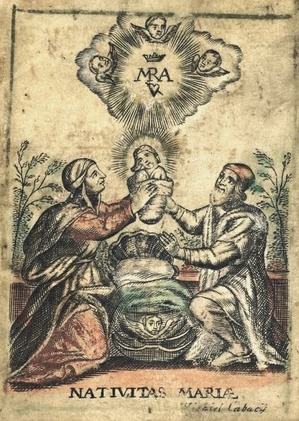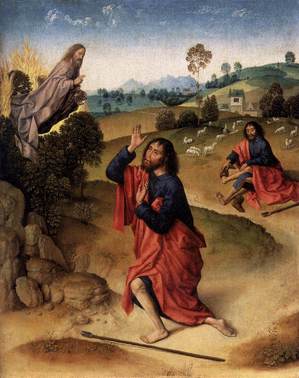You might ask why I care about the Subiaco Congregation… well, I care about the Congregation because it’s the largest and most diverse of all the groupings of those who follow the Benedictine Rule, and many of the monasteries do interesting things outside the typical works of parochial and educational ministries. And, because I care. Subiaco monks and nuns tend to be more focused on living the monastic life with intensity. One may also say that the English Benedictines have certain intensity in life and ministry which distinguishes them from other groupings.
9/11 – eternal memory
Subiaco Congregation of monks meet
 The General Congregation of the Subiaco Congregation of Benedictine monks are meeting this week at one of the monasteries founded by Saint Benedict, Saint Scholastica Monastery, Subiaco, Italy.
The General Congregation of the Subiaco Congregation of Benedictine monks are meeting this week at one of the monasteries founded by Saint Benedict, Saint Scholastica Monastery, Subiaco, Italy.
Praying for Charles Chaput and Philadelphia
Every bishop needs prayers. Yesterday was the year anniversary of Philadelphia Archbishop Charles Joseph Chaput’s taking over the work of being the pastor. He’s had a very tough year but not one without the finger of God directing his way. If there is a bishop that we ought to follow on this side of the Atlantic, this is the one. Here’s an insightful story of the Archbishop’s past year…. Read it please, and offer a prayer for both the archbishop and the archdiocese.
Be opened!
 The gospel for today has the word, “Be opened” –in other words, listen. It is a word that is most known by Christians in the Rite of Baptism where the priest touches the ears of the person to be christened saying, “Be opened.” Later in history, the word is made more famous for being the first word in the Rule of Benedict, Listen.
The gospel for today has the word, “Be opened” –in other words, listen. It is a word that is most known by Christians in the Rite of Baptism where the priest touches the ears of the person to be christened saying, “Be opened.” Later in history, the word is made more famous for being the first word in the Rule of Benedict, Listen.
Nativity of the Blessed Virgin Mary
 Let us celebrate with joy the Nativity of the Blessed Virgin Mary, for from her arose the sun of justice, Christ our God. (antiphon)
Let us celebrate with joy the Nativity of the Blessed Virgin Mary, for from her arose the sun of justice, Christ our God. (antiphon)
Impart to your servants, we pray, O Lord, the gift of heavenly grace, that the feast of the Nativity of the Blessed Virgin may bring deeper peace to those for whom the birth of her Son was the dawning of salvation.
Several things to pray for today,
- the Most Rev. Edoardo Aldo Cerrrato, CO, on the day of his episcopal ordination in Rome;
- the Cistercian Order;
- those who professed vows today;
- the Benedictines of Saint Mary’s Monastery (Petersham, MA);
- Archbishop Charles Chaput, OFM, Cap, on the first anniversary of being the archbishop of Philadelphia;
- Michael Maggiore who is healing.
Keeping in mind what Saint Thomas of Villanova reflected upon for today’s feast,
“What joy, what happiness there is in heaven! The shoot for the root of Jesse, sown so long ago in the patriarchs, has today sprung up and began to grow, and will bear a Flower which is destined to heal the world; a Flower whose scent revives the dead, whose taste heals the sick, whose beauty delights the angels; a Flower both white and red, which the angels long to see.”
Father Francis Weiser, S.J., in his The Holyday Book writes about today’s feast thus:
On Our Lady’s birthday the Church celebrates the first dawning of redemption with the appearance in the world of the Saviour’s mother, Mary.
The Blessed Virgin occupies a unique place in the history of salvation, and she has the highest mission ever commended to any creature. We rejoice that the Mother of God is our Mother, too.
Let us often call upon the Blessed Virgin as “Cause of our joy,” one of the most beautiful titles in her litany.
Since September 8 marks the end of summer and beginning of fall, this day has many thanksgiving celebrations and customs attached to it. In the Old Roman Ritual there is a blessing of the summer harvest and fall planting seeds for this day.
The winegrowers in France called this feast “Our Lady of the Grape Harvest”. The best grapes are brought to the local church to be blessed and then some bunches are attached to hands of the statue of Mary. A festive meal which includes the new grapes is part of this day.
In the Alps section of Austria this day is “Drive-Down Day” during which the cattle and sheep are led from their summer pastures in the slopes and brought to their winter quarters in the valleys.
This was usually a large caravan, with all the finery, decorations, and festivity. In some parts of Austria, milk from this day and all the leftover food are given to the poor in honor of Our Lady’s Nativity.
The 2010 post which includes a portion of a homily Saint Andrew of Crete is here.
Entertainment Weekly and the crass cliché of a slutty nun
I am not a subscriber to
Entertainment Weekly but this week when I saw the magazine I had another reason
for not reading this rag. The well-known actress Jessica Lange is on the
cover wearing a religious sister’s habit, a crucifix around her neck, brandishing
a cane and wearing fire-engine red lipstick and painted nails advocating “American Horror Story.” Hmmm, the
artists got the look of many women religious, right? It doesn’t take a
brain surgeon to see the ugliness of this image viz. with conversation the
Church is having with the Leadership Conference of Women Religious (LCWR).
While I am not a fan of what the LCWR stands for, or perhaps more accurately, what some members
of the LCWR stand for, there is no need perpetuate the crass cliché through
mocking portrayals of ruler-wielding nuns who are seen as backwards and stupid. The vast
majority of religious sisters and nuns are not this way. One ought to ask, “What about the beautiful work of teaching children
Catechism, their work with the poor and the marginalized, all those women of prayer and
learning in hospitals, and schools?
I think EW has stooped way too low in publishing a cover with anti-Catholic stereotyping. One can’t claim
that some members of the media are not anti-Catholic when a prominent magazine puts silly things on the cover. Really, a terrifying nun to advance a fictional
plot?
What does one say when EW describes Sister Jude (Miss Lange’s
character) as a “scarily stern woman of faith…and a fan of corporal
punishment…who has a penchant for red lingerie and vivid fantasies about her
superior, Monsignor Timothy O’Hara.” Further, EW quotes Joseph Fiennes who
says, “Clearly she’s attracted to the monsignor for his grace and
religiousness.” Fiennes plays O’Hara, “the monsignor might play with that,
manipulate that.” Slutty nun. Manipulative priest.
The show’s
co-creator, Ryan Murphy says, “I’m scared of aliens and I’m scared of Nazis and
I’m scared of nuns.”
To posit that there is no anti-Catholicism, I would think you might want to revise your opinion given the presence of fact: anti-Catholicism has a history, it’s alive and well. Some Catholics are not bothered by dysfunctional nuns priests. Art, in this case, is claimed to be in the realm of opinion,
that is, subjective. It is said that what is one person’s
good-natured ribbing is another person’s offensive stereotype. Do we
really think it is appropriate to hold this idea at all, never mind if we apply the whole issue to
those who hold Judiasm or Islam as their faith? Would the media think that
making fun of a rabbi, an iman or a Buddhist monk is a good thing? That doing so is good natured? Why do it
to Catholics?
EW’s incredibly sad portrayal of a Catholic sister as the
centerpiece of fictional show on TV is wrong, disrespectful, especially when
the reality is very different. The concept is ill-conceived.
Blessed Teresa of Calcutta
The most well-known face of 20th century Catholicism and care for the human person after Pope John Paul is Blessed Mother Teresa of Calcutta. Her life and work is incomparable as well as her relationship with God even if there was distance between the two. Nothing is more beautiful in the spiritual life than an honest relationship, especially with God. Mother Teresa died on this date in 1997. Soon after her death, the Church waived the waiting period before a cause for canonization could be submitted to the Holy See. She was beatified on October 19, 2003.
The Church prays
O God, who
called blessed Teresa, Virgin, to respond to the love of your Son thirsting on
the cross with outstanding charity to the poorest of the poor, grant us, we
beseech you, by her intercession, to minister to Christ in his suffering
brothers.
You may want to listen to Veronica Scarisbrick’s interview with Monsignor Leo Maasburg, a close friend of Mother, posted at Vatican Radio. He recently published a book, Mother Teresa of Calcutta: A Personal Portrait, 50 Inspiring Stories Never before Told (Ignatius, 2011).
A prior post on Blessed Teresa and Divine Mercy
Saint Moses
 The Kontakian of the Byzantine Liturgy the Church prays,
The Kontakian of the Byzantine Liturgy the Church prays,
Saint Gregory the Great
 Blessed Gregory, raised upon the throne of Peter, sought always the beauty of the Lord and lived in celebration of that love.
Blessed Gregory, raised upon the throne of Peter, sought always the beauty of the Lord and lived in celebration of that love.




